When choosing between chuck eye and ribeye steaks, the main differences boil down to flavor, texture, marbling, and price:
- Chuck Eye Steak: Known as the "poor man’s ribeye", it comes from the cow’s shoulder area. It has a bold, beefy flavor and moderate marbling, making it slightly firmer. It’s more affordable, typically costing $4–$6 less per pound than ribeye.
- Ribeye Steak: Cut from the rib section, it is prized for its rich, buttery flavor and exceptional tenderness due to its high marbling. Ribeye is a premium steak, often priced between $20–$50 per steak.
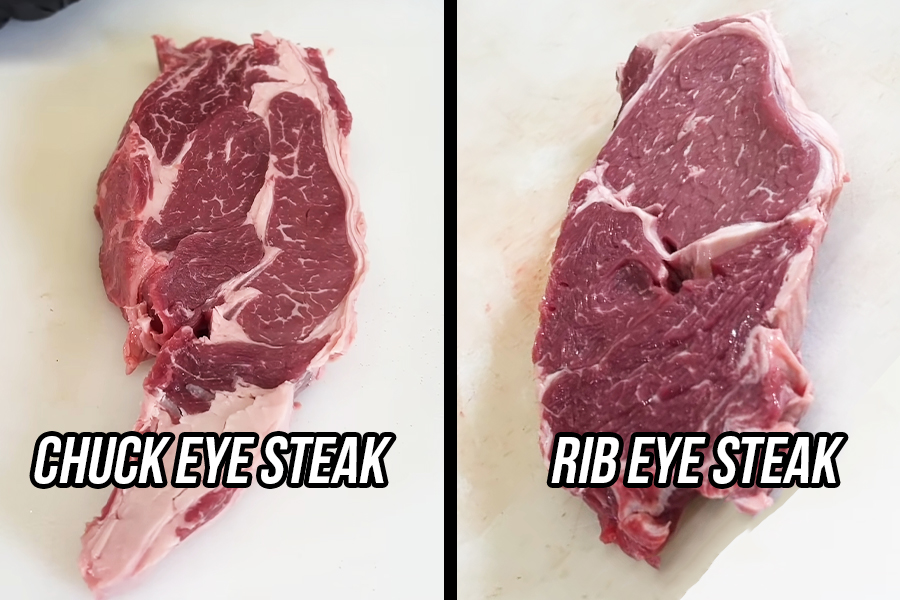
Quick Comparison:
| Characteristic | Ribeye | Chuck Eye |
|---|---|---|
| Flavor | Rich, buttery | Bold, beefy |
| Texture | Tender, creamy | Slightly firmer |
| Marbling | High | Moderate |
| Price | Higher ($20–$50) | Lower ($4–$6 less) |
| Cooking Methods | Grilling, searing | Grilling, marinating |
Ribeye is perfect for indulgence, while chuck eye offers a budget-friendly alternative with a similar flavor profile. Both cuts shine when cooked using high-heat methods like grilling or pan-searing, but chuck eye benefits from marination to enhance tenderness.
Chuck Eye Steak vs. Rib Eye Steak
Chuck Eye and Ribeye Steak Basics
Chuck eye and ribeye steaks have a lot in common. Both cuts come from neighboring areas of the cow and are celebrated for their deep, beefy flavor. It’s no wonder they’re often compared by both home cooks and professional chefs.
While their close proximity on the cow gives them similar taste profiles, their price tags can be quite different. Both cuts are versatile and respond beautifully to a range of cooking techniques like grilling, pan-searing, broiling, or even sous vide. With these basics in mind, let’s dive deeper into what makes each cut unique.
What Is Chuck Eye Steak?
Chuck eye steak comes from the cow’s upper shoulder, specifically the chuck primal section. This cut is essentially an extension of the ribeye muscle into the shoulder, earning it the nickname “poor man’s ribeye.”
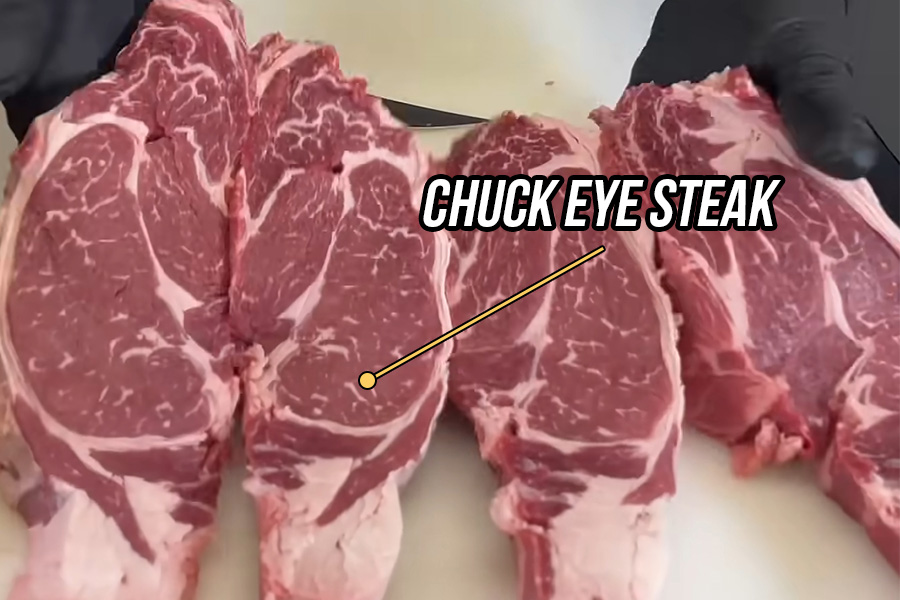
"Chuck eye steaks are sometimes referred to as a ‘butchers’ steak’…The steak gets its nickname because years ago butchers would keep this steak for themselves because it cooked and tasted like a rib eye while being more budget-friendly…This steak sits right next to the rib eye primal and therefore inherits a lot of the same qualities you would get from a rib eye." – Jason Jerome, beef supply chain expert at Beef. It’s What’s For Dinner
The chuck eye delivers a bold, beef-forward flavor that rivals many pricier cuts. While it does have some marbling, it doesn’t quite reach the level of fat distribution found in a ribeye steak. This difference in marbling impacts its texture and how it cooks. However, the chuck eye remains a fantastic option for those looking for ribeye-like qualities without the higher price tag.
What Is Ribeye Steak?
Ribeye steak comes from the rib section of the cow, specifically surrounding the ribeye muscle. It’s one of the most sought-after cuts in American steakhouses and a favorite for home cooks as well.
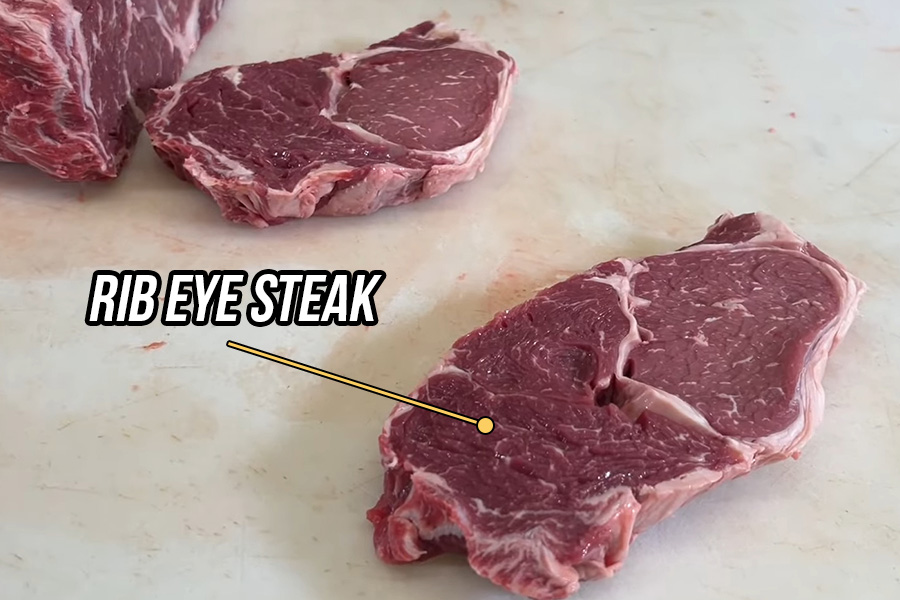
What sets ribeye apart is its incredible marbling – the intricate fat network that runs through the muscle. This marbling is what gives ribeye its rich, buttery flavor and unmatched tenderness. The fat melts as it cooks, creating a luxurious texture many steak lovers consider the pinnacle of indulgence. Because the rib muscles do minimal work during the cow’s life, ribeye steaks are naturally tender and forgiving, staying juicy and flavorful even with slight variations in cooking.
Ribeye’s premium qualities come with a higher price, but for those seeking an exceptional steak experience, it’s often worth the splurge.
Next, we’ll explore how each cut’s location on the cow influences its texture and the best ways to cook it.
Where Each Cut Comes From
Understanding where each cut comes from helps explain their similarities in flavor, as well as their differences in texture and price. These anatomical details are key to grasping their cooking methods and flavor profiles.
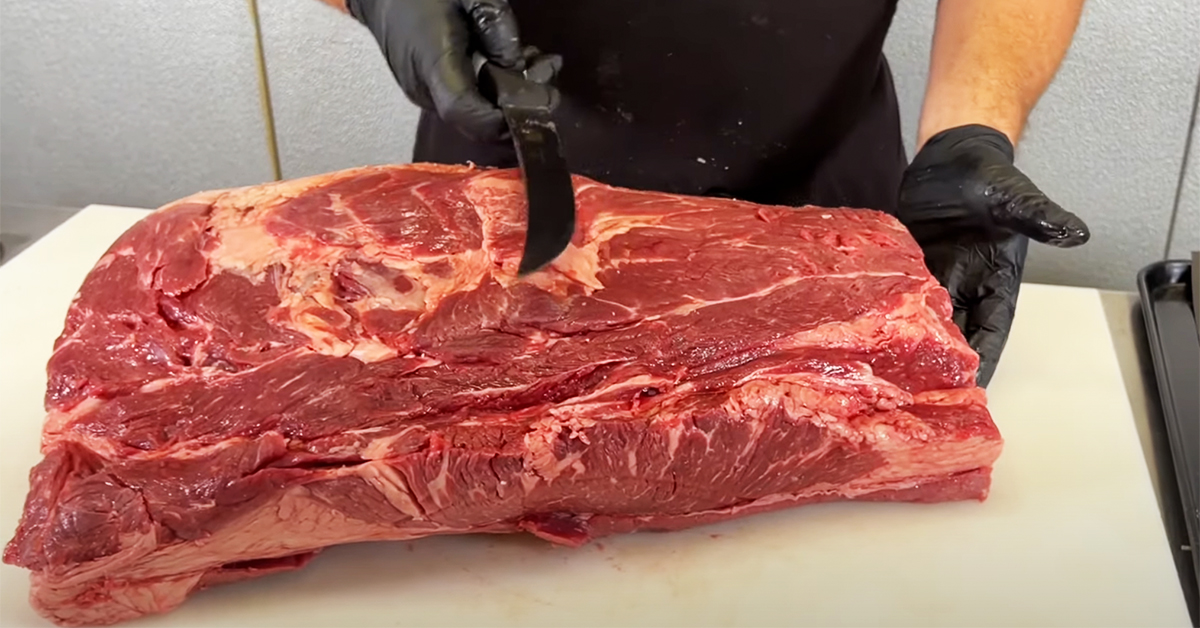
Location on the Cow
The ribeye steak is sourced from the rib section of the cow, typically between the sixth and twelfth ribs. This area is located in the upper ribcage, nestled between the loin and shoulder. Because the muscles here don’t get much activity, they develop fine marbling, which contributes to the ribeye’s rich flavor and tenderness.
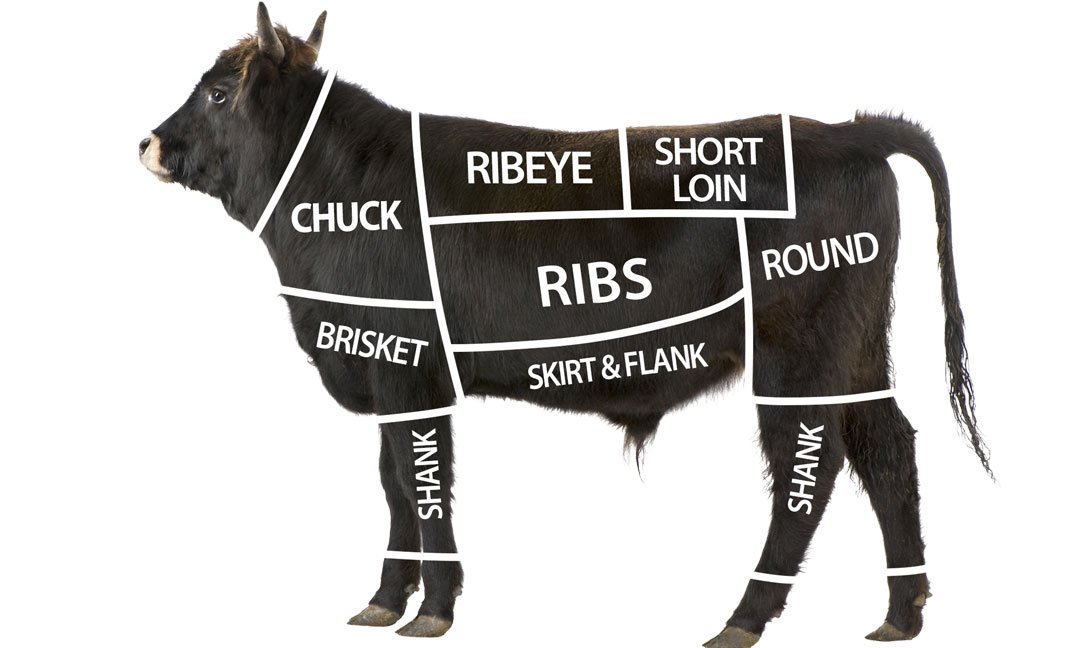
On the other hand, the chuck eye is cut from the fifth rib, extending into the shoulder, which is part of the chuck primal. This cut includes part of the ribeye muscle but transitions into the more heavily worked shoulder area.
This difference in location plays a big role in shaping the flavor and determining the best cooking methods for each cut.
How Location Affects Texture
The activity level of the muscles where these cuts come from directly impacts their tenderness. Less active muscles, like those in the rib section, create steaks with fine marbling and a naturally tender texture. That’s why ribeye steaks are known for their buttery softness.
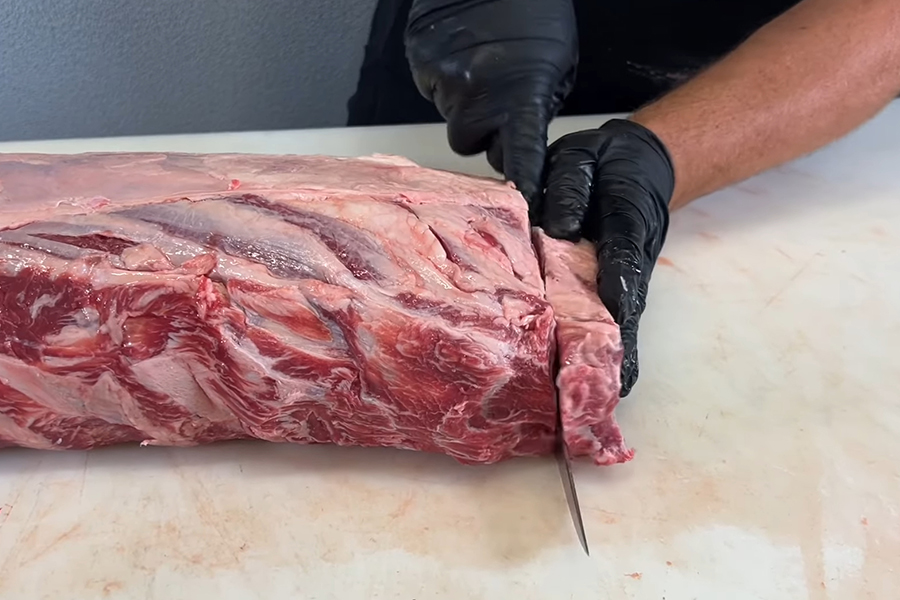
In comparison, the chuck eye, while the most tender part of the chuck primal, comes from a more active area of the cow. This results in meat that’s slightly firmer than ribeye.
Ribeye steaks, with their delicate texture, are perfect for dry-heat cooking methods like grilling or broiling, which preserve their tenderness. Chuck eye steaks, though also great for grilling or pan-searing, may need a touch more attention during cooking to bring out their best texture.
Flavor, Marbling, and Tenderness
When it comes to chuck eye and ribeye, their differences in marbling, tenderness, and flavor significantly influence how they’re cooked and enjoyed.
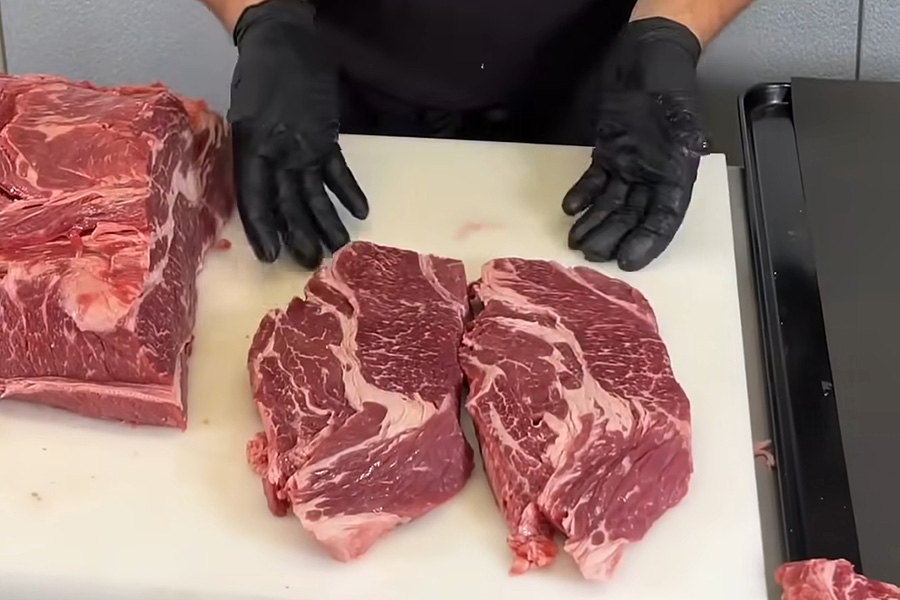
Let’s break down these traits to better understand what makes each cut unique.
Marbling and Tenderness Differences
The marbling in these cuts – those streaks of intramuscular fat – plays a big role in their texture and flavor. Ribeye steaks boast a higher level of marbling compared to chuck eye steaks. This abundance of fat creates a buttery texture and a rich flavor. During cooking, the marbling melts, enhancing the meat’s juiciness and tenderness while also ensuring even heat distribution.
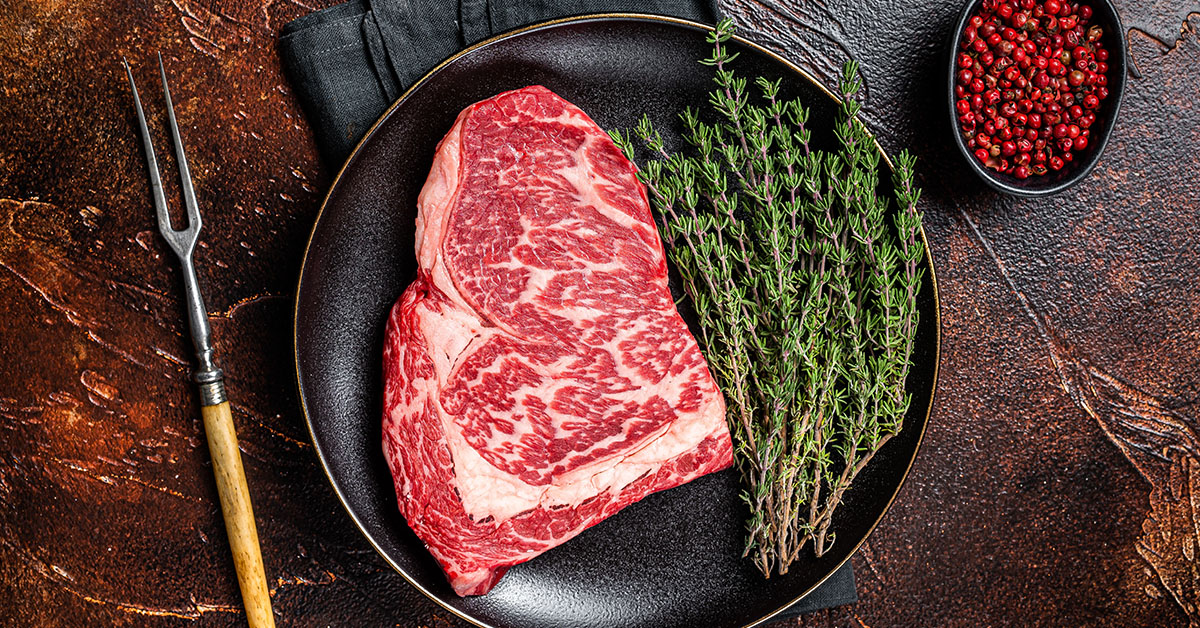
Chuck eye steaks, on the other hand, have moderate marbling, giving them a firmer texture. While still flavorful, they require cooking to at least medium to retain moisture and tenderness. Ribeye remains tender even when cooked to medium or medium-well, but chuck eye benefits from marinating to enhance its texture and flavor.
Flavor Profiles
Ribeye’s high marbling delivers a rich, buttery flavor that pairs perfectly with its tender, melt-in-your-mouth texture. Chuck eye, being closer to the shoulder, offers a robust, beefy flavor with a slightly firmer bite. This hearty taste appeals to those who enjoy a more intense, savory steak experience. With proper marination and cooking, the chuck eye can shine just as brightly as its pricier counterpart.
| Characteristic | Ribeye | Chuck Eye |
|---|---|---|
| Marbling Level | High intramuscular fat | Moderate marbling |
| Texture | Buttery, melt-in-your-mouth | Firmer, slightly chewy |
| Flavor Profile | Rich, buttery, well-rounded | Strong, beefy, savory |
| Tenderness | Exceptionally tender | Tender when cooked properly |
| Cooking Tolerance | Stays tender at medium to medium-well | Best cooked to at least medium |
sbb-itb-5ae85c5
Price and Where to Find Them
If you’re a steak enthusiast looking to enjoy great flavor without overspending, the chuck eye might be your new best friend. Its affordability compared to the ribeye can be a game-changer for your grocery budget.
Why Chuck Eye Costs Less
Chuck eye steaks are usually priced $4 to $6 less per pound than ribeye, and in some cases, they can cost nearly half as much. That’s a significant difference for anyone keeping an eye on their spending.
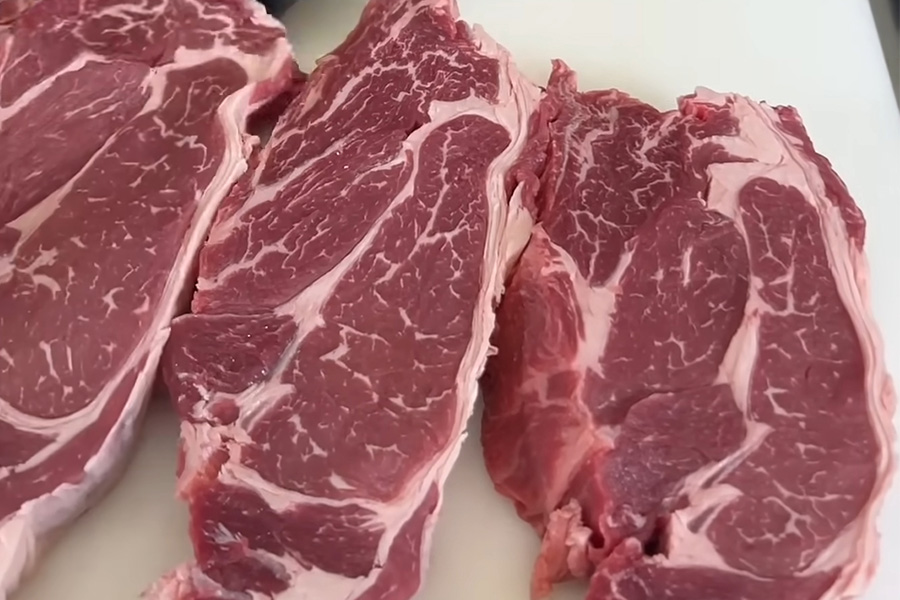
The reason behind this lower price lies in its origin. Chuck eye comes from the beef chuck primal, one of the largest sections of the cow. This ensures a steady supply, helping to keep prices low. Ribeye, on the other hand, is sourced from the smaller rib section, which naturally makes it more limited and pricier. It’s no wonder ribeye is among the most expensive steak cuts available.
For those who love bold, beefy flavors, chuck eye delivers without emptying your wallet. It’s ideal for everything from casual family dinners to weekend grilling sessions.
Finding These Steaks in the U.S.
Ribeye is a staple in most grocery stores, butcher shops, and meat markets across the United States. Depending on quality and grade, you can expect to pay anywhere from $20 to $50 per steak. If you’re after premium options, online retailers like Kansas City Steaks and 44 Farms offer USDA Choice and Prime grades, complete with delivery to your doorstep.
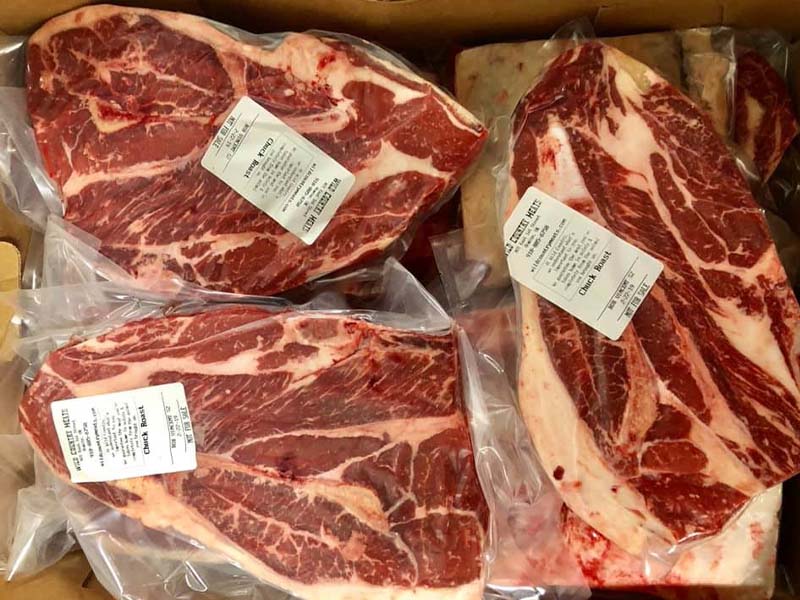
Chuck eye, however, can be a bit trickier to find. Standard grocery stores don’t always stock it, as each cow yields only a small number of chuck eye steaks. Many butchers reserve them for regular customers who know to ask for this hidden gem. If you’re serious about snagging some chuck eye, your best bet is to build a relationship with your local butcher or explore specialty meat markets. While some online retailers do carry chuck eye, the selection is often more limited compared to ribeye.
These differences in cost and availability might also influence how you approach cooking these steaks, which we’ll dive into in the next section.
How to Cook Each Steak
To bring out the best in each steak’s texture and flavor, it’s important to use cooking techniques tailored to their unique qualities. Here’s how to make the most of each cut.
Cooking Chuck Eye Steak
Chuck eye steak benefits from a bit of extra preparation to enhance its flavor and tenderness. Start with a simple marinade – olive oil, garlic, and herbs work wonderfully. Let the steak soak for 30 minutes to 2 hours to infuse it with flavor and improve its texture.
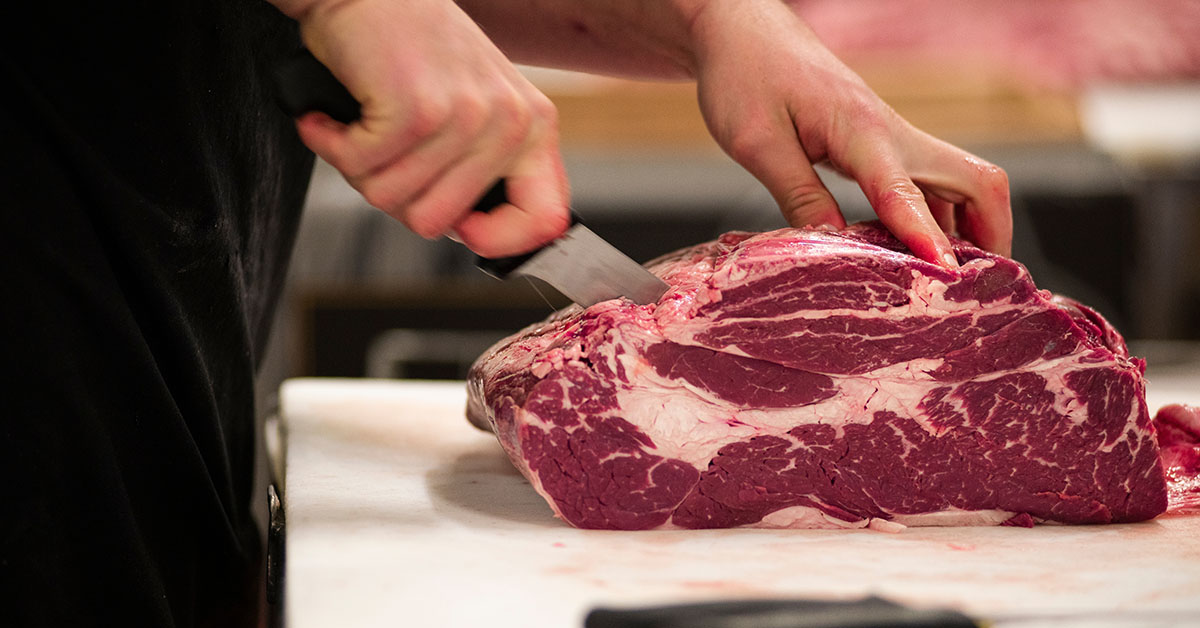
Before cooking, pat the steak dry and season generously with salt and pepper. For best results, cook it quickly over high heat. Whether you’re using a grill or a cast iron skillet on medium-high heat, the goal is to create a crusty, flavorful exterior while keeping the inside tender. If the cut is on the thinner side, skewers can help keep it intact during grilling.
Aim for medium-rare (130°F–135°F) or medium (135°F–145°F) doneness. A meat thermometer is your best friend here, ensuring you hit the perfect temperature.
As Christine from COOKtheSTORY puts it:
"This budget-friendly cut of meat can be as tender and juicy as ribeye steaks if they are cooked well."
Cooking Ribeye Steak
Ribeye steak, with its beautiful marbling, is naturally flavorful and requires minimal preparation. Start by patting the steak dry, seasoning it with coarse salt and pepper, and letting it rest at room temperature for 20 to 30 minutes before cooking.
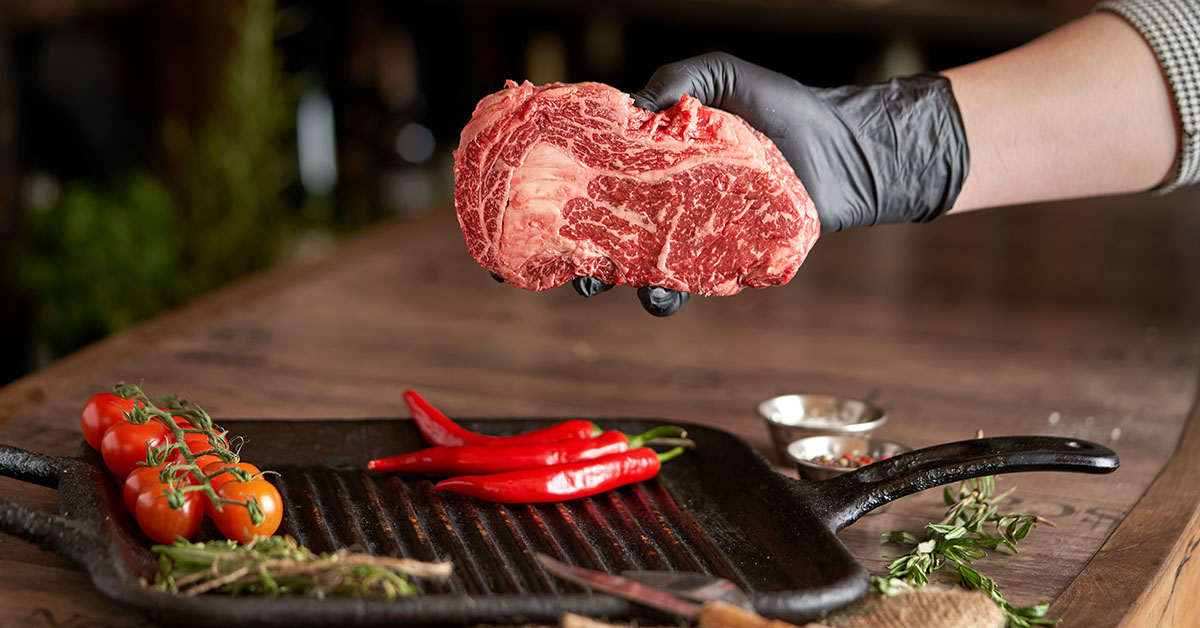
This steak shines with high-heat methods like grilling or pan-searing. The goal is to achieve a golden, caramelized crust while keeping the inside juicy and pink. Medium-high heat works best, and cooking to medium-rare or medium doneness ensures the marbled fat melts perfectly, enhancing the steak’s flavor.
Once cooked, let the ribeye rest for about 5 minutes, loosely covered with foil. This step allows the juices to redistribute, making each bite more satisfying.
What to Serve With Each Steak
Chuck eye steak pairs well with bold, flavorful accompaniments. Garlic butter, herb-based marinades, or a tangy chimichurri sauce can elevate its hearty profile. For sides, think comfort food – creamy mashed potatoes, mac and cheese, or honey-glazed carrots are all excellent choices.
Ribeye, on the other hand, is best complemented by simple sides that let its rich flavor take center stage. A dollop of herb butter or a sprinkle of coarse sea salt is often enough. Classic sides like baked sweet potatoes, grilled asparagus, or a fresh tossed salad provide a balanced and satisfying meal.
Conclusion
After exploring the differences between ribeye and chuck eye steaks – covering everything from flavor and tenderness to cost and cooking methods – you’re now equipped to pick the right cut for your next meal. Ribeye, known for its rich, buttery flavor and tenderness, comes from the rib section, while chuck eye offers a bold, beefy taste from the shoulder area, often at nearly half the price.
Ribeye shines on special occasions when indulgence is the goal, while chuck eye is a great option for hearty, budget-friendly meals. Ribeye delivers consistent flavor with just a sprinkle of seasoning, whereas chuck eye benefits from marinades and careful cooking to bring out its best.
At Wild Country Meats, you’ll find premium-quality ribeye and chuck eye steaks, along with a team ready to help you choose the ideal cut for your preferences and budget. Whether you’re planning a luxurious dinner or a satisfying weeknight meal, you can count on their dedication to quality and service to make your steak night a success.
Both cuts have their moment: ribeye for indulgence and chuck eye for everyday flavor-packed satisfaction.
FAQs
How do cooking methods impact the flavor and tenderness of chuck eye and ribeye steaks?
Cooking methods can make or break the flavor and texture of both chuck eye and ribeye steaks. Each cut has its own sweet spot when it comes to preparation.
For chuck eye, quick, high-heat methods like grilling or pan-searing are your go-to. Cooking it to medium-rare is key – it locks in moisture, creates a delicious crust, and keeps the steak juicy and satisfying.
When it comes to ribeye, high-heat techniques also shine, but reverse searing deserves special mention. This method not only melts the marbling for that rich, buttery flavor but also gives you precise control over doneness, ensuring every bite is as tender as it is flavorful.
While slow-cooking methods like braising can soften tougher cuts like chuck, they might dull the steak’s natural flavors. To truly savor what each cut has to offer, stick with high-heat cooking – it’s the best way to bring out their unique qualities.
How can I make a chuck eye steak more tender?
To make a chuck eye steak tender, you can use a few simple techniques. One option is to marinate it with an acid-based marinade – think vinegar, pineapple juice, or papaya. These acids work to break down the muscle fibers, giving the steak a softer texture. Another method is to physically tenderize the meat by gently pounding it with a meat mallet.
Cooking the steak low and slow is another great approach. Techniques like braising or using a sous vide machine can help soften those tough connective tissues. And don’t skip the resting step – let the steak sit for a few minutes after cooking. This allows the juices to redistribute, making every bite juicy and flavorful.
Why is ribeye steak more expensive than chuck eye steak?
Ribeye steak tends to cost more than chuck eye steak because it comes from a softer, more tender part of the cow and boasts excellent marbling. Those small streaks of fat running through the meat are what give ribeye its rich, savory flavor and juicy texture, making it a favorite choice for those seeking a premium steak experience.
Chuck eye steak, sometimes called the "Poor Man’s Ribeye", offers a budget-friendly alternative. While it shares some of the ribeye’s flavor due to being cut from a nearby section, it has less marbling and is a bit tougher, which makes it less tender overall. These differences in fat content and texture largely explain why ribeye commands a higher price tag.

